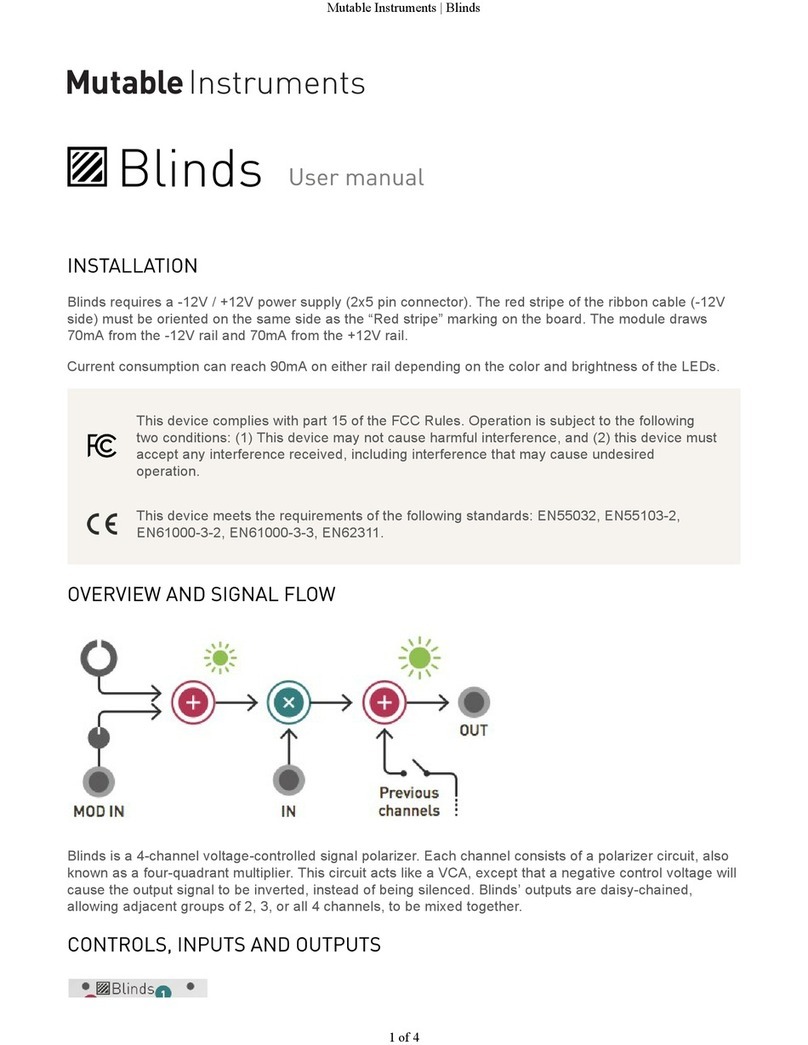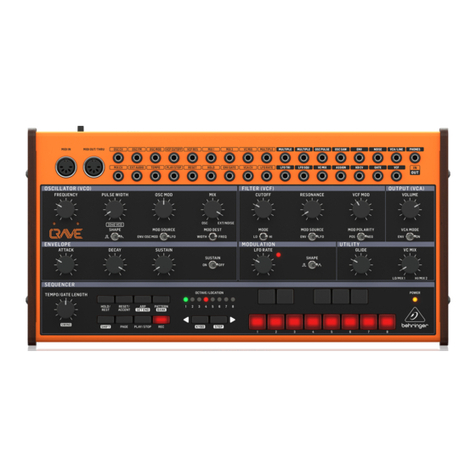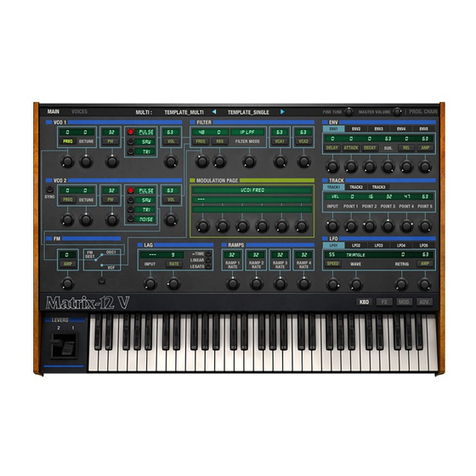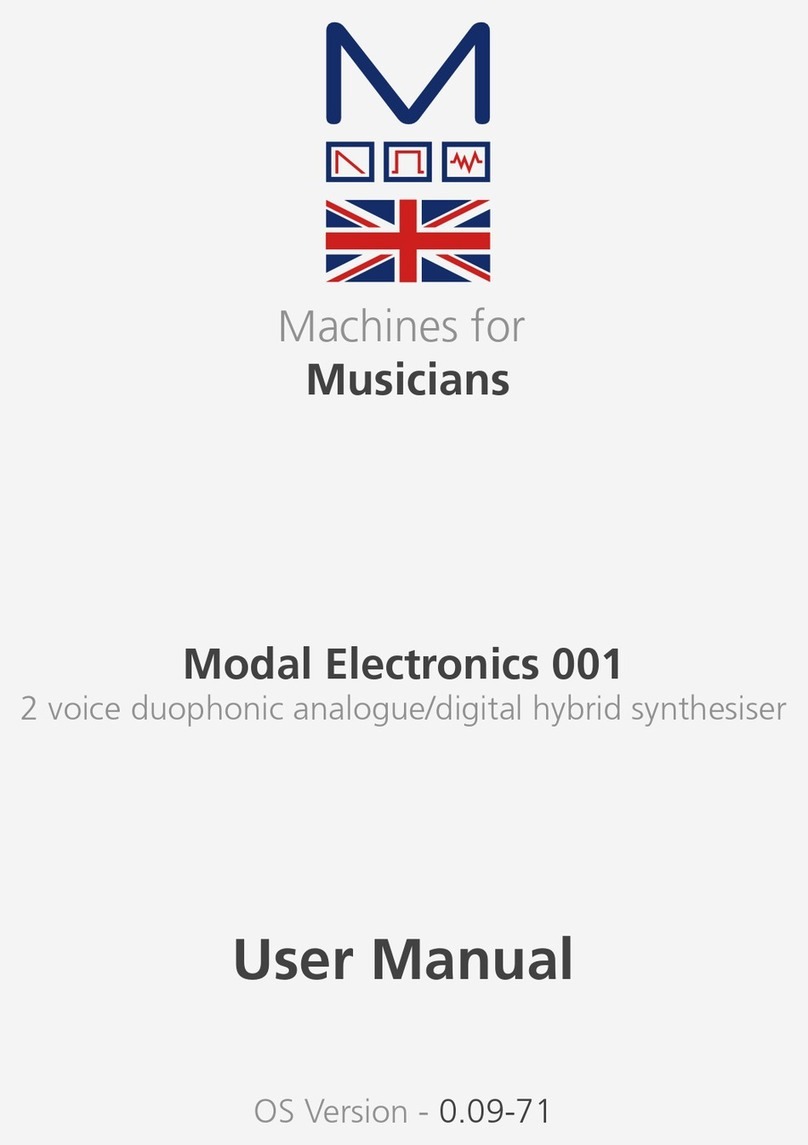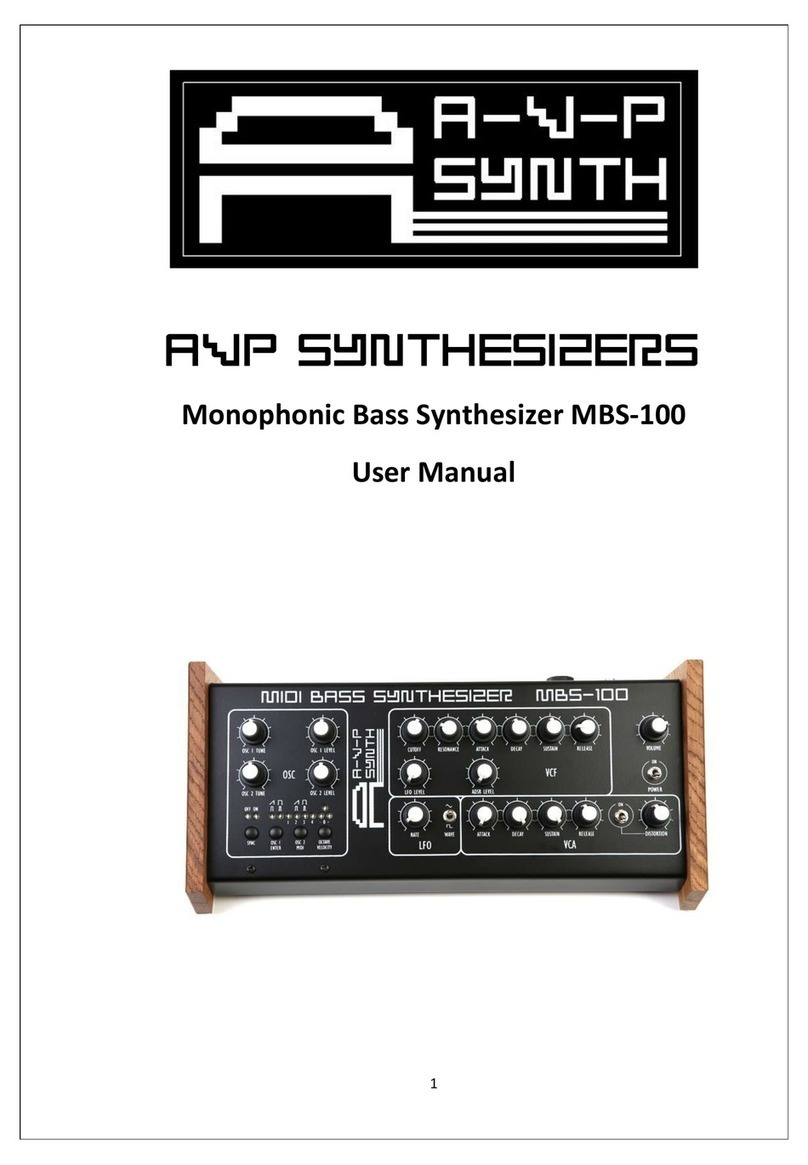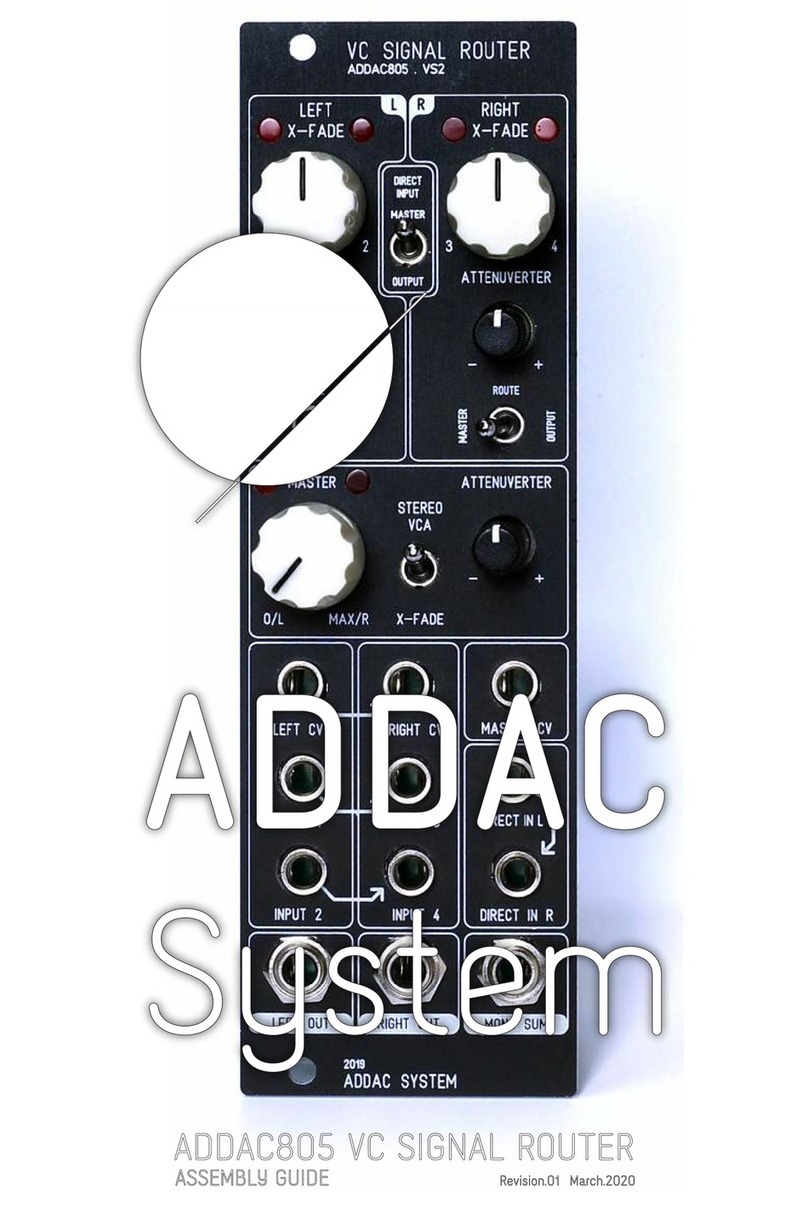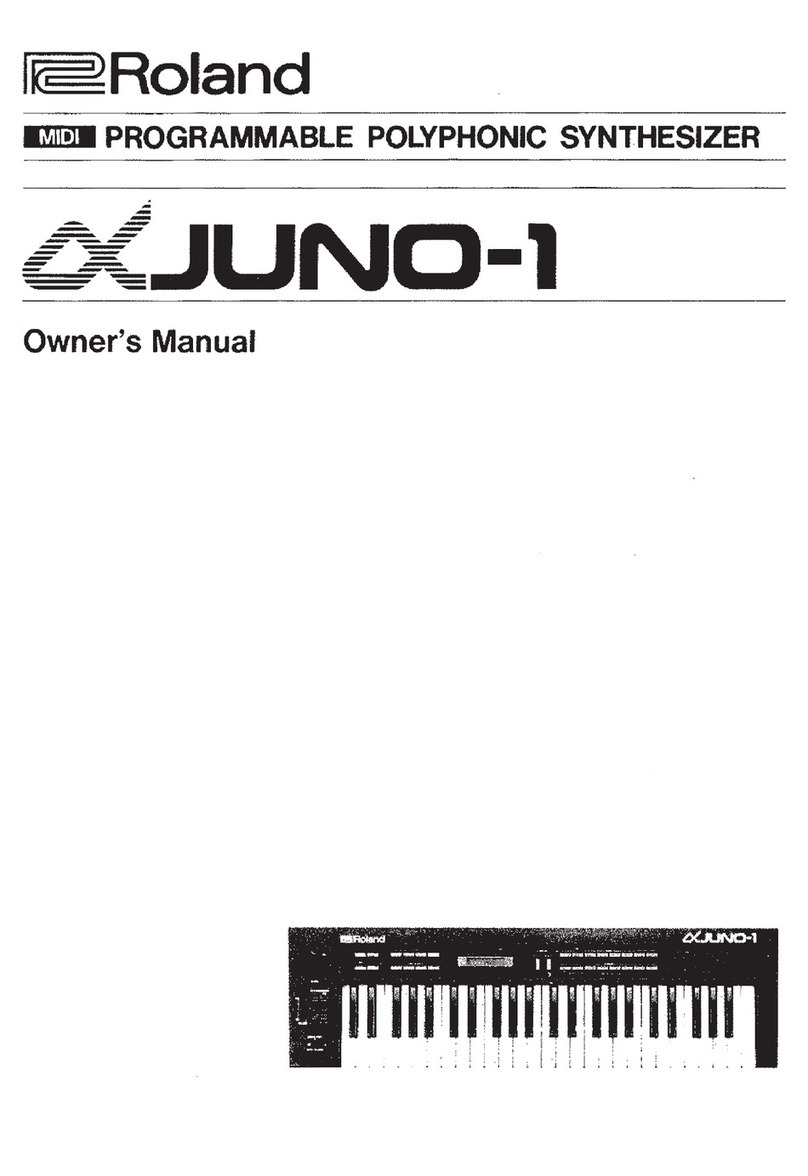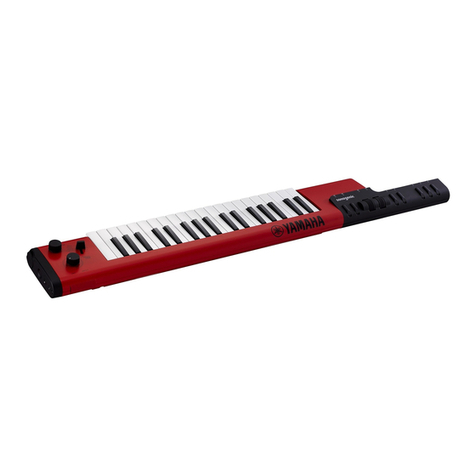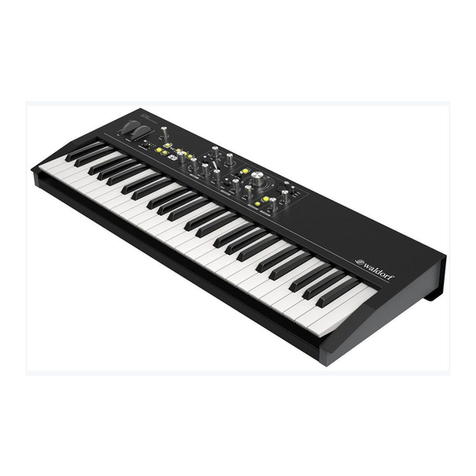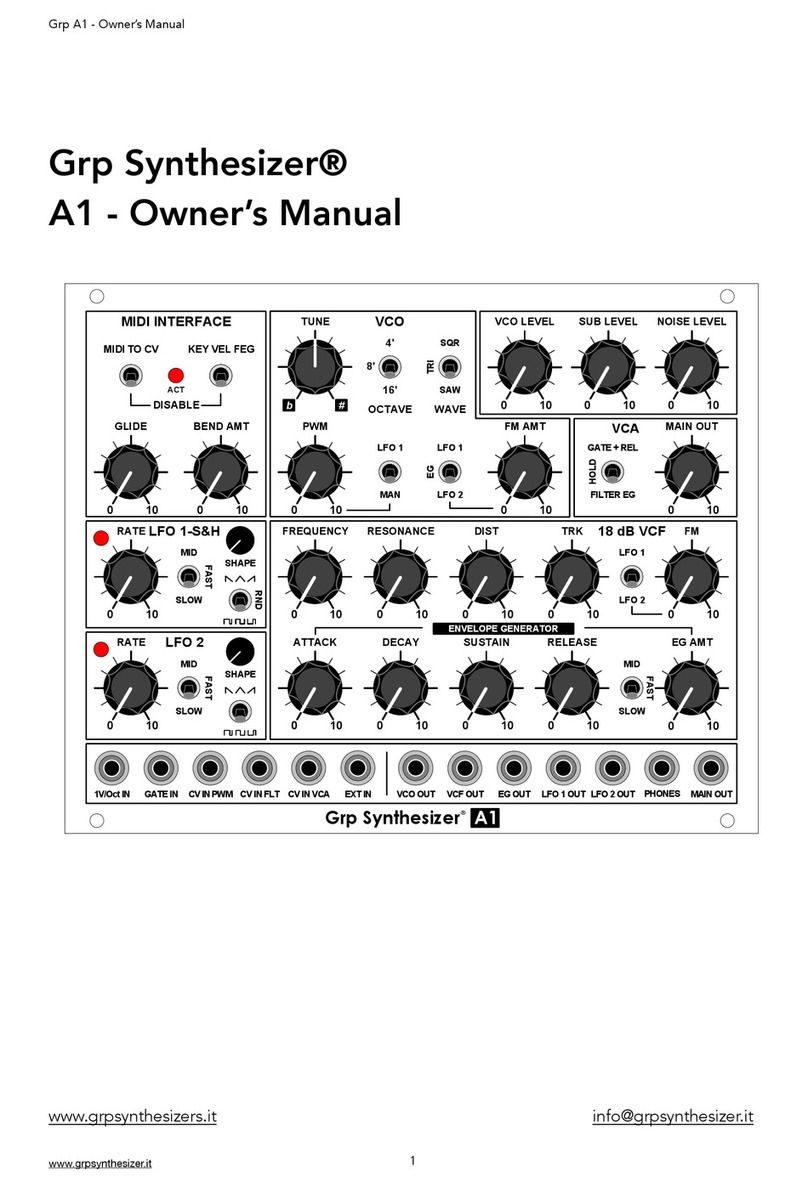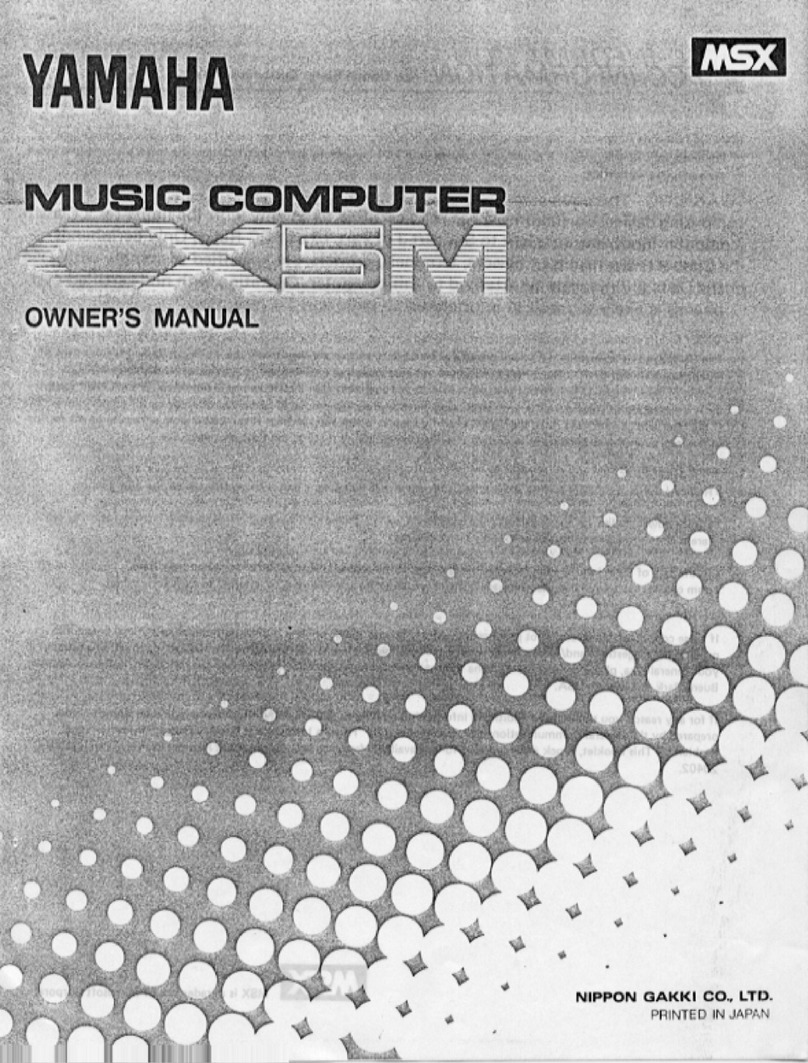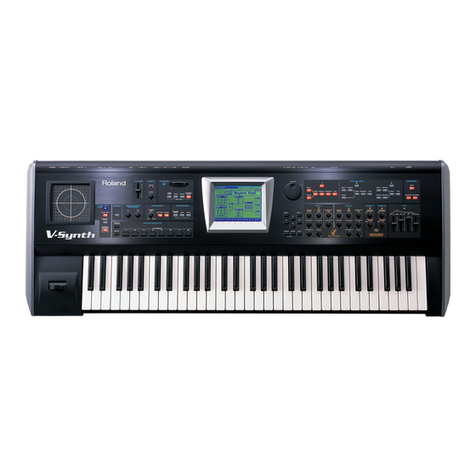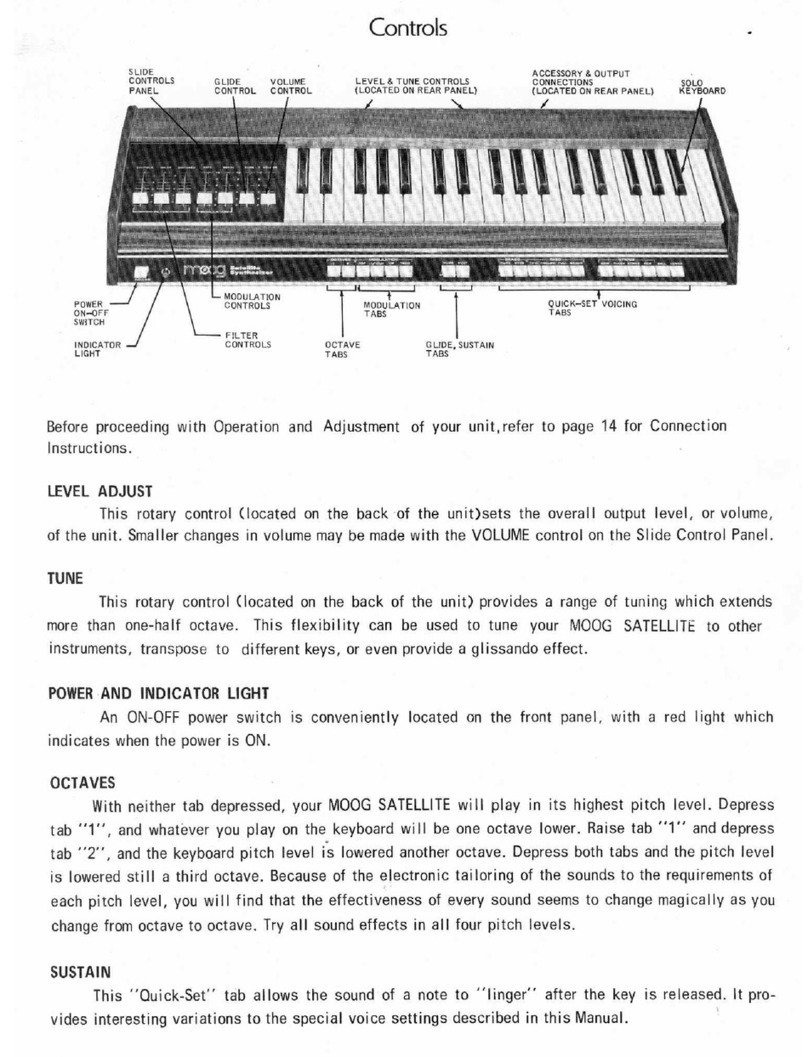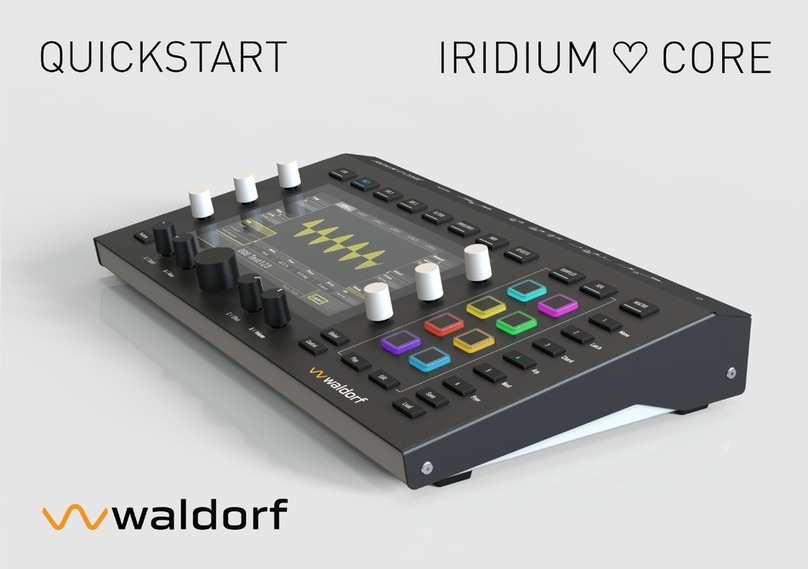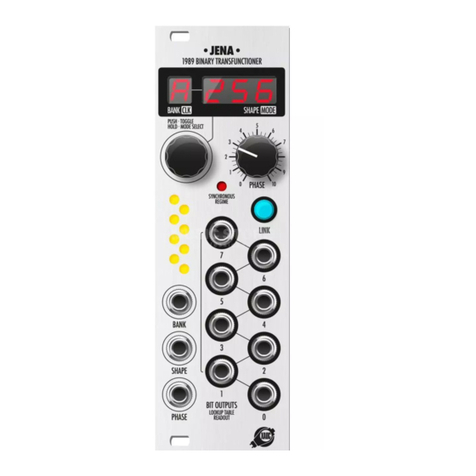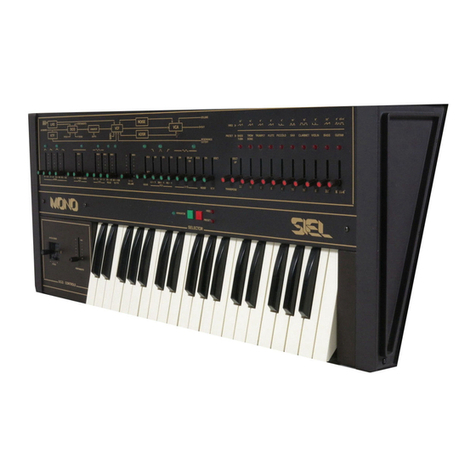Mutable Instruments Anushri User manual

1/17/18, 8'04 AMMutable Instruments | Anushri - Assembly instructions
Page 1 of 23https://mutable-instruments.net/archive/anushri/build/
Anushri - Assembly
instructions

1/17/18, 8'04 AMMutable Instruments | Anushri - Assembly instructions
Page 2 of 23https://mutable-instruments.net/archive/anushri/build/
Anushri is made of two circuit boards. The first board (main board) is holding the power supply, the
whole analog synthesis signal chain, the MIDI interface and the main processor. The second board
(control board) contains all the controls (switches, pots, LEDs, and connectors). A consequence of
that is that builders with a love for panel-mounted controls can build the main board and just wire all
the controls to it. We don’t recommend that unless you have some insane passion to show.
SCHEMATICS AND PCB
Main board schematics in PDF format.
Control board schematics in PDF format.
Main board top and bottom part placement.
Control board part placement.
You can find the Eagle files for this board in the source code hosted on github.
BILL OF MATERIALS
Bill of Materials.
Some friendly notes for the self-sourcing crowd:
Digikey resistor values might be a bit different due to strict adherence to the E-series. This is not a
problem.
A J112 can be used as a substitute for the 2N5458. A BF245 can also be used, but it needs to be
mounted backwards because of a different pinout.
The TS912 is an unusual - but justified here - choice of op-amp. Look for +/- 5V operation and true rail
to rail I/O if you want to source a substitute.
Voltage references (LM4040) are available in different precision grades identified by letters A, B, C, D.

1/17/18, 8'04 AMMutable Instruments | Anushri - Assembly instructions
Page 3 of 23https://mutable-instruments.net/archive/anushri/build/
For integration into a modular setup and precise CV in/out, it is recommended to use the A or B grades.
C grade is fine for standalone use.
If pots with center-detent are hard to find, you can use a standard part. When it matters, the software
scanning the pot will still apply a “virtual notch” to the center of the pot.
BUILDING FOR EURORACK
If you want to build Anushri as an Eurorack module:
Do not solder the input/output connectors at the back of the unit (MIDI, audio IN/OUT, on/off switch, DC
power).
Do not insert the LT1054 DC-DC converter in its socket.
Solder a 2x5 power connector (-12V, ground, ground, ground, +12V) on the edge of the main board.
The rack-mounting kit contains a spare panel that can be used to relocate the MIDI I/O and the
6.35mm audio output to the front panel.
ASSEMBLY INSTRUCTIONS
Some equipment you’ll need:
1. Soldering iron + solder (nothing fancy, a 15 or 20W will do).
2. Cutters.
We assume you know soldering. If you don’t, look first at this tutorial.
**DISCLAIMER: ** We are not responsible for anything wrong (including electric shocks,
malfunctions, fires, accidents involving a soldering iron) that might happen during the assembly of
the kit. Everything you do while assembling the kit is at your own risks.
Resistors
The assembly starts with the main board.
All resistors have a 1% tolerance so their last ring is always brown (if it isn’t, you are looking at it
backwards). It is recommended to test the value of one resistor from each strip before stuffing them
in the board.

1/17/18, 8'04 AMMutable Instruments | Anushri - Assembly instructions
Page 4 of 23https://mutable-instruments.net/archive/anushri/build/
Start with the 100’s decade:
4x 220R resistors (red, red, black, black) at positions R1, R3, R4, R13.
11x 470R resistors (yellow, purple, black, black) at positions R5, R6, R9, R10, R21, R22, R27, R51,
R55, R57, R62.
The 1k’s decade:
7x 4.7k resistors (yellow, purple, black, brown) at positions R25, R38, R39, R45, R50, R52, R53.

1/17/18, 8'04 AMMutable Instruments | Anushri - Assembly instructions
Page 5 of 23https://mutable-instruments.net/archive/anushri/build/
The 10k’s decade:
9x 10k (brown, black, black, red) at positions R2, R29, R37, R49, R63, R64, R70, R73, R77.
1x 12k (brown, red, black, red) at position R28.
3x 15k (brown, green, black, red) at positions R18, R30, R35.
10x 22k (red, red, black, red) at positions R11, R14, R23, R26, R36, R40, R43, R44, R46, R47.
1x 27k (red, purple, black, red) at position R72.
9x 33k (orange, orange, black, red) at positions R12, R16, R17, R19, R20, R24, R31, R54, R67.
1x 39k (orange, white, black, red) at position R71.
1x 49.9k (yellow, white, white, red) at position R68.
1x 62k (blue, red, black, red) at position R66.
2x 68k (blue, grey, black, red) at positions R56, R59.

1/17/18, 8'04 AMMutable Instruments | Anushri - Assembly instructions
Page 6 of 23https://mutable-instruments.net/archive/anushri/build/
The 100k’s decade:
9x 100k (brown, black, black, orange) at positions R7, R8, R33, R34, R41, R42, R48, R60, R61.
1x 150k (brown, green, black, orange) at position R32.
4x 200k (red, black, black, orange) at positions R15, R58, R65, R69.
Diodes
Diodes are polarized, and their polarity is indicated by a ring. This should match the ring/stripe
printed on the circuit board.

1/17/18, 8'04 AMMutable Instruments | Anushri - Assembly instructions
Page 7 of 23https://mutable-instruments.net/archive/anushri/build/
3x 1N4148 (1N4148 printed on the body of the diode) at positions D1, D5, D6.
2x 3.6V Zener (1N5227B or BZX79 C3V6) at positions D3 and D4.
1x 1N400x (large, power supply protection diode) at position D2. 1N4001, 1N4002, 1N4003, 1N4004
only differ by their current/voltage ratings, all are fine for this project.
You can also add at this stage the quartz crystal at position Q3. It is not polarized.
Ceramic capacitors
Ceramic capacitors look like yellow or blue “drops”. They are not polarized.

1/17/18, 8'04 AMMutable Instruments | Anushri - Assembly instructions
Page 8 of 23https://mutable-instruments.net/archive/anushri/build/
2x 10pF (100) at positions C20, C51.
2x 18pF (180) at positions C54, C55.
1x 100pF (101) at position C12.
5x 560pF (561) at positions C8, C17, C30, C32, C35.
33x 100nF (104).
IC sockets

1/17/18, 8'04 AMMutable Instruments | Anushri - Assembly instructions
Page 9 of 23https://mutable-instruments.net/archive/anushri/build/
Add the IC sockets. It is strongly recommended to align the notch of the IC socket with the notch on
the symbol printed on the PCB.
9x DIP8.
3x DIP14.
7x DIP16.
1x DIP28.
Transistors, special resistors and capacitors

1/17/18, 8'04 AMMutable Instruments | Anushri - Assembly instructions
Page 10 of 23https://mutable-instruments.net/archive/anushri/build/
Add:
3x trimmers. The adjustment screws should be on the same side as on the symbol printed on the
board.
3x LM4040 voltage references, 1x 2N3906 transistor and 1x 2N5485. Check the symbol printed on the
board for their alignment.
1x 22nF film capacitor (C4).
2x 220pF styroflex capacitor (C14, C28).
1x 2.2nF styroflex capacitor (C9). You can solder it to pins 1 3 (leaving the middle pin) or to pins to 2 3
(leaving the left pin) depending on the size of the part. See the image below.
1x 1.6 10k resistor network. See the image below for orientation: the dot on the resistor network should
be on the same side as the 1printed on the board.

1/17/18, 8'04 AMMutable Instruments | Anushri - Assembly instructions
Page 11 of 23https://mutable-instruments.net/archive/anushri/build/
Electrolytic and tantalum capacitors
Add 4x 4.7uF non-polarized capacitors. Just ignore the +/- printed on the board - these parts are not
polarized.

1/17/18, 8'04 AMMutable Instruments | Anushri - Assembly instructions
Page 12 of 23https://mutable-instruments.net/archive/anushri/build/
Add 5x 100uF electrolytic capacitors. These parts are polarized, the +/- is printed on the PCB. The
negative lead is identified by a white stripe and a shorter lead.
Add 1x 10uF tantalum capacitor. The positive lead is identified by a stripe on the capacitor.

1/17/18, 8'04 AMMutable Instruments | Anushri - Assembly instructions
Page 13 of 23https://mutable-instruments.net/archive/anushri/build/
Power supply
Add the two voltage regulators (LM7805 and LM7905). These are two different parts, don’t mix them
up even if they look similar.

1/17/18, 8'04 AMMutable Instruments | Anushri - Assembly instructions
Page 14 of 23https://mutable-instruments.net/archive/anushri/build/
Add the DC jack and power switch. You don’t have to solder the power switch if you intend to mount
the unit behind a Euro panel.
Connectors
Add the main audio in/out connectors - unless you intend to mount the unit behind a panel for your
Eurorack setup of course.
Add the 2x3 ISP connector (unless you don’t have an AVR programmer or are not interested in
firmware development).

1/17/18, 8'04 AMMutable Instruments | Anushri - Assembly instructions
Page 15 of 23https://mutable-instruments.net/archive/anushri/build/
Solder the 4x male 2x8 connectors used to connect the two boards. Note that they are on the other
side of the board.

1/17/18, 8'04 AMMutable Instruments | Anushri - Assembly instructions
Page 16 of 23https://mutable-instruments.net/archive/anushri/build/
Finally, add the MIDI connectors
That’s it! You can insert the IC. Note that the TS912 used in the first batch of kits is now replaced by
the more modern TLV2372. Here’s how the finished board looks like:

1/17/18, 8'04 AMMutable Instruments | Anushri - Assembly instructions
Page 17 of 23https://mutable-instruments.net/archive/anushri/build/
Now, let’s move to the control board.
Add the 6x 220R resistors (red, red, black, black).
Add the 6x switches.
Add the 6x LEDs. Note that they are polarized. The symbol printed on the board shows a round side
(+) and a flat edge (). The long lead of the LED is the (+), the short one the (). See the image below for
reference.

1/17/18, 8'04 AMMutable Instruments | Anushri - Assembly instructions
Page 18 of 23https://mutable-instruments.net/archive/anushri/build/
Add the 4x 2x8 female connectors on the other side of the board.
Anushri uses three different kinds of pots. Don’t mix them up!
Add the 12x jack connectors. It is recommended to solder only one leg (the middle one) of all of them
first, so that their position can be easily tweaked for optimal alignment. Once you are satisfied with their
alignment, solder the two remaining legs.
Add the 2x DPDT and 2x SPDT switches.
Add the 2x 100k pots with audio taper (resonance and main volume). An A is printed on the pot symbol

1/17/18, 8'04 AMMutable Instruments | Anushri - Assembly instructions
Page 19 of 23https://mutable-instruments.net/archive/anushri/build/
on the PCB; and to identify the right part you can read “FA 100K” under the pot. If you are unsure which
pot is which, check the resistance between the first and third lead before soldering them.
Add the 3x 10k pots with center detent. A “CD” label is printed on the pot symbol on the PCB; and to
identify the right part you can try turning the pot and check for the click/detent at 12’o’clock. These are
used for the pulse-width, and LFO/ENV pitch and PWM modulation where the central position of the
pot corresponds to a neutral setting.
Add the remaining 16 10k pots.
Here is how it looks like with switches and knobs (not really necessary at this stage…) in place.
Test and calibration
VCO calibration
VCO calibration is needed only if you plan to use the CV in/out for accurate pitch control. Otherwise,
you can let the software tune the unit by holding the “hold” button and pressing “run/stop”. You
should hear a low-volume arpeggio (played by the unit to measure the pitch produced by the VCO
for a few test voltages). When the unit is software-tuned, the VCO will react incorrectly to external
VCO CV signals, and will produce VCO CV signals which are slightly off (since they have the
compensation of software-tuning built into them).
The calibration procedure consists in the following steps:
1. Power the unit on and leave it on for a few minutes.
2. Make sure that oscillators sync is disabled. The sync switch must be to the low position.
3. Hold the “hold” button and press “rec” to disable software correction of tuning.
4. Set the pot labelled “2” to its minimal position.
5. Adjust the two VCO trimmers (offset and scale) until the synth plays in tune in the C1 - C4 range. Note
that tuning accuracy starts to degrade below 50 Hz due to some internal resistance on the SSM2164
inputs (which are not true virtual grounds), and above 2kHz due to integrator reset time compensation

1/17/18, 8'04 AMMutable Instruments | Anushri - Assembly instructions
Page 20 of 23https://mutable-instruments.net/archive/anushri/build/
through R25 falling apart, and deviation from exponential response from the SS2164.
VCF calibration
1. Dial a patch in which the oscillators are silent. This can be achieved by enabling sync and setting the
oscillators pitch to a very low value.
2. Disable the envelope / LFO modulation on filter cutoff.
3. Set cutoff to a middle value.
4. Set resonance to a maximum value.
5. You should hear the self-oscillation tone. Adjust the V/Oct trimmer so that the intervals are respected –
that is to say, when you play C3 then C4, you should hear two notes, maybe not C3s and C4s, but they
must be one octave apart. If you do not have a good sense of pitch, you can try a software tuner like
Tuna Pitch on OS X. If the filter is correctly tuned, you should be able to play the filter “self oscillation
tone” across roughly 4 octaves with correct tuning.
Note that VCF tuning might vary a bit with temperature, so there is no need to spend too much time
on this!
Mechanical assembly
The following mechanical parts are used to hold the boards and the case together:
Note that a newer revision of the case has 10 holes, not 4, on its bottom panel.
It is recommended to do the assembly from the inner to the outer - start by assembling the two
boards together…
Other manuals for Anushri
1
Table of contents
Other Mutable Instruments Synthesizer manuals
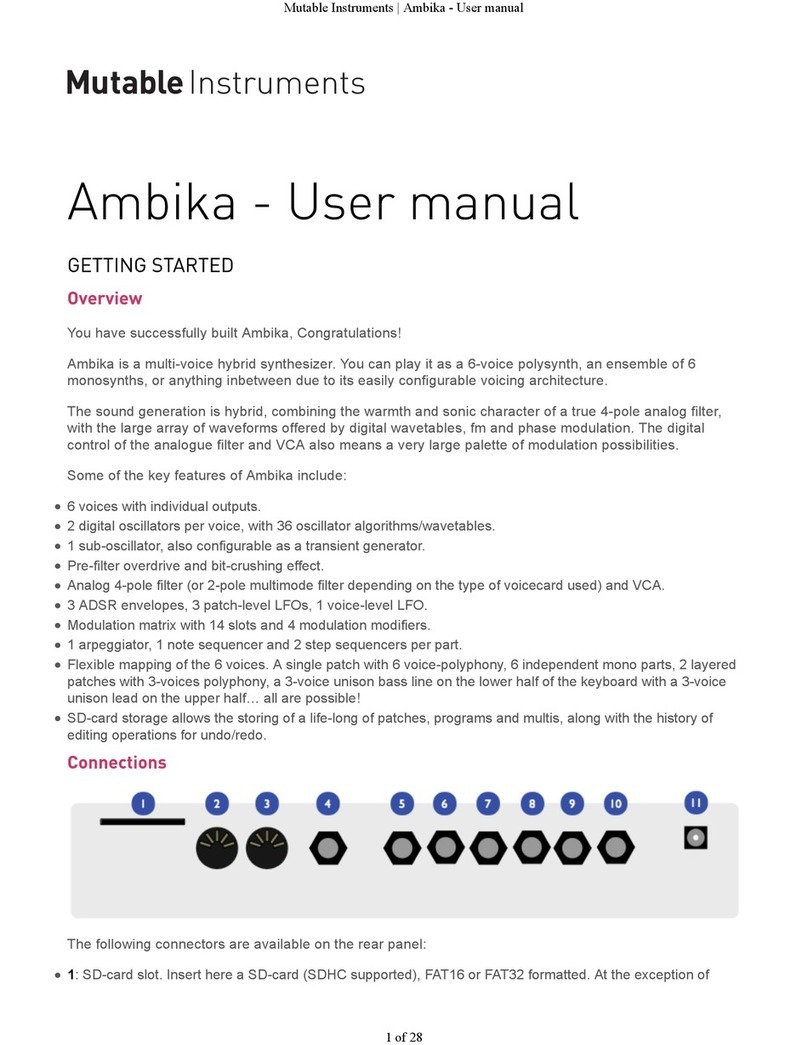
Mutable Instruments
Mutable Instruments ambika User manual
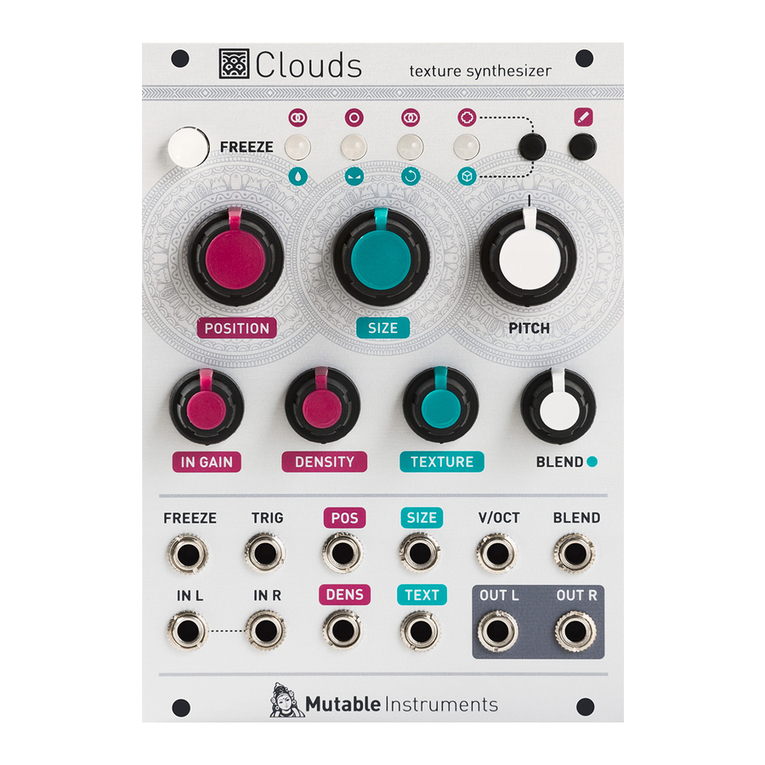
Mutable Instruments
Mutable Instruments Clouds User manual

Mutable Instruments
Mutable Instruments ambika User manual
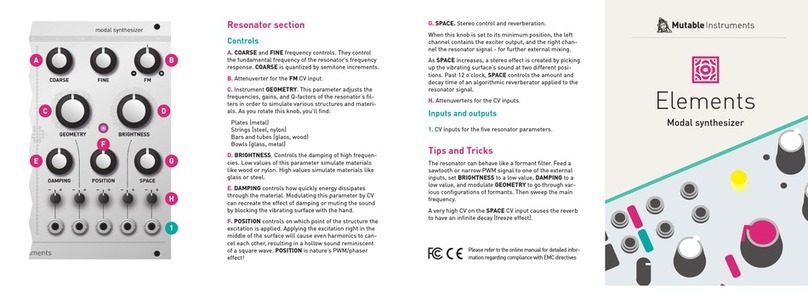
Mutable Instruments
Mutable Instruments Elements User manual

Mutable Instruments
Mutable Instruments ambika User manual
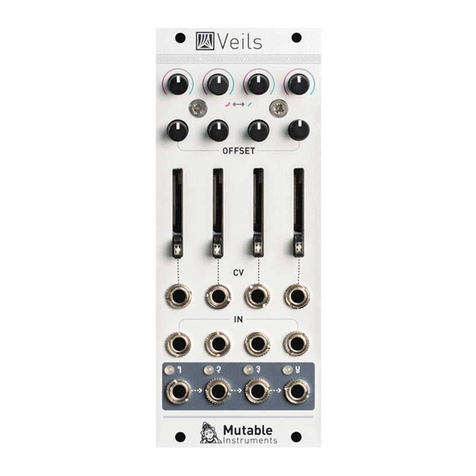
Mutable Instruments
Mutable Instruments Veils User manual
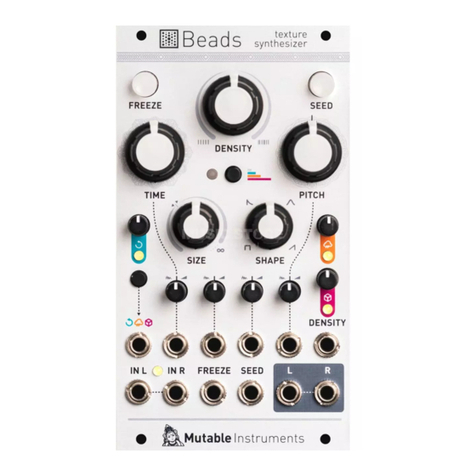
Mutable Instruments
Mutable Instruments Beads User manual
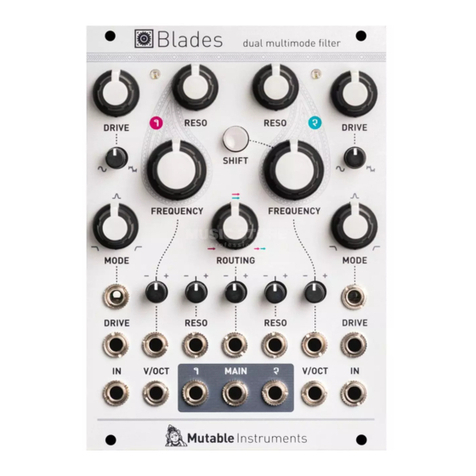
Mutable Instruments
Mutable Instruments Blades User manual

Mutable Instruments
Mutable Instruments Clouds User manual

Mutable Instruments
Mutable Instruments Anushri User manual
